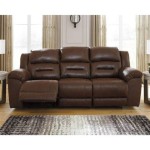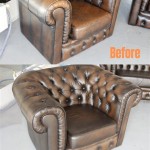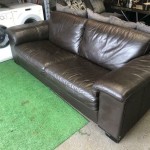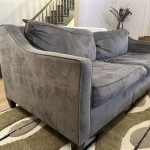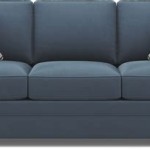Wooden Sofa Cushion Design: Latest Images and Considerations
The integration of wooden sofas with carefully chosen cushions represents a significant aspect of interior design. The interplay between the structural integrity of wood and the comfort offered by cushions allows for a multitude of aesthetic and functional possibilities. The following discussion explores recent trends in wooden sofa cushion design, examining key considerations for selection and implementation while referencing relevant imagery to illustrate prevailing styles.
Wooden sofas, renowned for their durability and timeless appeal, often serve as focal points within living spaces. The addition of cushions not only enhances comfort but also provides an opportunity to introduce color, texture, and pattern, thereby influencing the overall ambiance of a room. The selection of cushions should be guided by a thoughtful consideration of the wood's finish, the sofa's overall design, and the desired aesthetic.
Understanding Design Styles and Material Choices
Contemporary design trends often emphasize clean lines and minimalist aesthetics. In the context of wooden sofas, this translates to streamlined frames constructed from light-toned woods such as birch or ash. Cushions complementing this style frequently feature geometric patterns, solid colors in neutral palettes, or subtle textures like linen or brushed cotton. Image examples would show sofas with simple rectangular cushions in gray, beige, or off-white, often arranged in symmetrical configurations.
Rustic or farmhouse-inspired designs, conversely, favor warmer tones and more textured materials. Wooden sofas in this style may be crafted from reclaimed wood or feature a distressed finish. Cushions chosen for these sofas commonly incorporate floral prints, plaid patterns, or natural fabrics like burlap or wool. Images would feature examples of sofas with mismatched cushions in earthy tones like brown, green, and rust, often arranged in a more relaxed or eclectic manner.
Mid-century modern designs often pair wooden frames with bold colors and geometric shapes. Teak or walnut wood is frequently used, and cushion choices often mirror the vibrant color palettes characteristic of the era. These cushions might feature abstract patterns, solid colors like mustard yellow, teal, or orange, or fabrics with a slight sheen. Images will show sofas with cushions that emulate these design elements, arranged to contribute to the retro aesthetic.
Material choices are paramount when selecting cushions for wooden sofas. The durability, comfort, and aesthetic qualities of the fabric all contribute to the overall user experience. Natural fibers like cotton and linen are breathable and comfortable, making them suitable for everyday use. Synthetic fibers like polyester are more resistant to stains and fading, making them a practical choice for homes with children or pets. Performance fabrics, which are specifically designed to withstand heavy use and resist spills, are also gaining popularity.
Considering Cushion Fill and Support
The fill of a cushion significantly impacts its comfort and longevity. Down feathers provide a luxurious feel and excellent loft, but they require more maintenance and may not be suitable for individuals with allergies. Polyurethane foam offers good support and is relatively inexpensive, but it can degrade over time and lose its shape. Memory foam conforms to the body and provides excellent pressure relief, but it can be more expensive than other options. A blend of different materials, such as down and feathers combined with polyurethane foam, can offer a balance of comfort and support.
Proper support is crucial for maintaining good posture and preventing discomfort. The thickness and density of the cushions should be chosen based on the intended use of the sofa. For example, a sofa used primarily for lounging may benefit from thicker, softer cushions, while a sofa used for more formal seating may require firmer, more supportive cushions. The shape of the cushions also plays a role in support. Back cushions with a slight curve can provide better lumbar support, while seat cushions with a contoured design can help distribute weight more evenly.
Beyond the primary seat and back cushions, accent cushions can add layers of comfort and visual interest. Throw pillows in various shapes and sizes can be used to create a more inviting and personalized space. Bolster pillows can provide additional support for the arms or back. Lumbar pillows can help maintain proper posture when sitting for extended periods. Examples in images would show using a variety of sizes and shapes to enhance the sofa's overall aesthetic and ergonomic profile.
Examining Practical Considerations: Maintenance and Durability
The practical aspects of cushion design, particularly maintenance and durability, require careful consideration relative to likely usage patterns. The ease with which cushions can be cleaned directly impacts their long-term aesthetic appeal and hygiene. Removable cushion covers that can be machine washed or dry cleaned offer the greatest convenience. Fabrics that are inherently stain-resistant or feature a protective coating can also simplify maintenance.
The durability of cushion fabrics is a key factor in determining their lifespan. Fabrics with a tight weave and high thread count are generally more resistant to wear and tear. The seams of the cushions should be reinforced to prevent them from splitting or fraying. The zipper closures should be durable and easy to use. Regularly rotating and fluffing the cushions can help distribute wear evenly and prolong their lifespan. Images showing close-ups of fabric textures would help illustrate weaves and thread counts to aid in selection.
Exposure to sunlight can cause fabrics to fade over time, so it's important to choose fabrics that are resistant to fading, especially if the sofa is located near a window. Dark-colored fabrics are generally more prone to fading than light-colored fabrics. Consider using curtains or blinds to protect the sofa from direct sunlight. The use of UV-resistant sprays can also help protect fabrics from fading.
Beyond fabric durability, the construction of the cushion itself contributes significantly to its longevity. High-quality stitching, robust zippers, and carefully secured seams are essential for preventing premature wear and tear. Reinforced corners and edges can also help protect the cushion from damage. The use of a durable inner lining can prevent the fill from shifting or leaking. These construction details, while often hidden from view, are crucial for ensuring that the cushions maintain their shape and integrity over time.
Ultimately, the ideal wooden sofa cushion design balances aesthetic appeal with practical considerations. Careful attention to material choices, fill options, support features, and maintenance requirements will result in cushions that not only enhance the beauty of the sofa but also provide lasting comfort and durability. The selection process should be informed by a thorough understanding of the factors discussed above, enabling informed decisions that align with individual needs and preferences. Continuous examination of latest trends and images provides inspiration for current and future design projects, ensuring a sofa that remains stylish and comfortable for years to come.

Solid Wood Sofa Cushion Cover

Wooden Sofa Decor Ideas Designs Modern

Buy Wooden Sofas Upto 70 Off With Classic Style Royaloak

Sofa Set Buy Stylish Wooden Designs For Living Room Furniture Every Home Sunrise International

Taskwood Furniture Solid Wooden With Cushions For Living Room Cream Fabric 3 Seater Sofa In Buy

Fabric L Shape Designer Wooden Sofa Set Back Style Cushion At 32000 Piece In Siliguri
Solid Wood Sofa Cushion Mahogany Sponge New Chinese Federal Chair Four Seasons Universal Anti Slip Removable Washable

6 Seater Teak Wooden Sofa Set With Cushion At 68700 In Coimbatore Id 2850483397633

Wooden Sofa With Cushion 5 Seaters Teak Wood

1000 Ideas About Wooden Sofa On Couch

